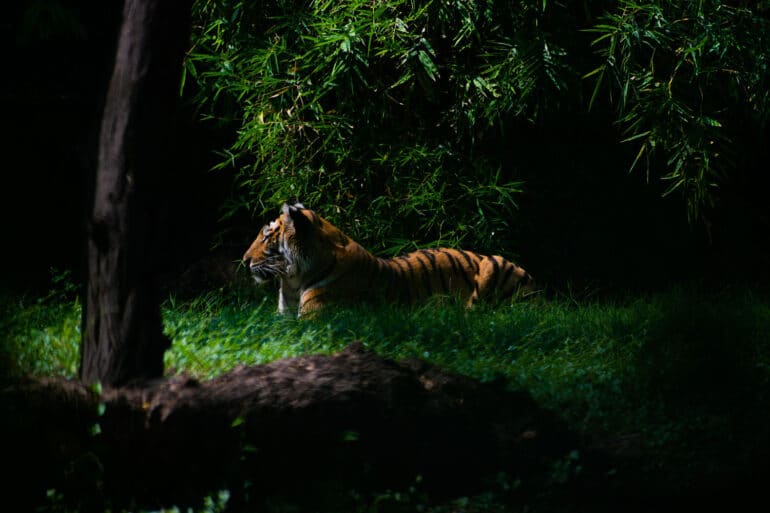The tiger is a long-ranging species, and individuals disperse over distances of up to 650 km (400 mi) to reach tiger populations in other areas. To identify his territory, the male marks trees by spraying urine
A dominant tigress they called Padmini killed a 250 kg / 550 lb male nilgai – a very large antelope. They found her at the kill just after dawn with her three 14-month-old cubs, and they watched uninterrupted for the next ten hours. During this period the family was joined by two adult females and one adult male, all offspring from Padmini’s previous litters, and by two unrelated tigers, one female the other unidentified. By three o’clock there were no fewer than nine tigers round the kill.
With smaller prey, such as monkeys and hares, the tiger bites the nape, often breaking the spinal cord, piercing the windpipe, or severing the jugular vein or common carotid artery.
In the 1990s, a new approach to tiger conservation was developed: Tiger Conservation Units (TCUs), which are blocks of habitat that have the potential to host tiger populations in 15 habitat types within five bioregions. Altogether 143 TCUs were identified and prioritized based on size and integrity of habitat, poaching pressure and population status. They range in size from 33 to 155,829 km2 (13 to 60,166 sq mi).
In 2016, an estimate of a global wild tiger population of approximately 3,890 individuals was presented during the Third Asia Ministerial Conference on Tiger Conservation.













